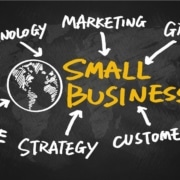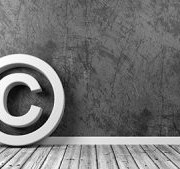Measuring Customer Profitability: 3 Tips Businesses Should Know
If you’re a business owner, you know how valuable a good customer can be—as well as how draining a bad one can be. How can small businesses measure and identify their most profitable customers to attract more of them? Below, we’ll discuss some tips and tricks for measuring customer profitability and how you can use these metrics to grow your business.
What Is Customer Profitability?
You may assume that your most profitable customers are simply those who spend the most money with you. However, this isn’t all that goes into profit—you’ll also need to consider the costs associated with the customer relationship. When measuring customer profitability, consider customers who are high-maintenance and use a disproportionate amount of your employees’ time or who tend to return items more often than other customers. They may be less profitable than lower-maintenance customers who spend a bit less. Some particularly difficult customers may even be costing you money.
There are a variety of software programs designed to help assess profitability based on your business’s unique metrics. A Chartered Professional Accountant (CPA) can help you evaluate the data these programs generate giving you insights on the allocation of resources and productivity; however, there are some slightly lower-tech ways to measure customer profitability, which we’ll discuss below.
Measuring Customer Profitability: Three Tips
Identify Your Customer Contact Channels
Before you can see what’s working and what isn’t, you’ll need to identify each of the potential ways in which a customer can interact with your company. Do you have a website? Social media pages? A public email address? Storefronts? A call centre? Unless you’re tracking the levels of engagement through all of these potential customer interaction channels, you could be missing key pieces of data that may inform your customer profitability analysis.
Once you’ve identified these channels, you can then evaluate the costs associated with each. These can include:
- Advertising and marketing costs
- Infrastructure expenses (rent, utilities, real estate taxes)
- Shipping costs
- Return, refund, and restocking costs
Define Your Customer Categories
Many businesses tend to have customer segments that are clearly defined. For example, there are few daycare customers who aren’t parents of young children—but assessing customer categories for retail and department stores can be trickier, as these tend to attract a much broader range of demographics.
However, business owners are uniquely positioned to define their customer categories, as you have first-hand knowledge of your business, your products, and your general impressions of who’s spending money (and who isn’t) at your business. Some questions to ask yourself include:
- What types of customers do you see?
- Is your “typical customer” different at different times of the day? (For example, some businesses tend to see more students in the afternoon and early evening, while retirees may make up the bulk of customers from 9 to 5 on weekdays.)
- What motivates your customers to purchase from you?
- Who is your competition? Do your customers tend to be loyal to one business or simply patronize whoever is most convenient at the time?
- Which categories of customers tend to interact with your staff the most?
With this information in hand, you can begin to do some calculations for measuring customer profitability.
Begin Tracking and Logging Key Performance Indicators (KPIs)
Some profitability KPIs you’ll want to measure and track when measuring customer profitability can include:
- Average revenue per user (ARPU), calculated by dividing the total revenue by the total number of customers or subscribers.
- Customer lifetime value (CLV), which projects the entire net profit that will be generated from a customer over the course of their relationship with your business. You can calculate CLV by multiplying the annual profit per customer by the average number of years they’ll stay a customer, then subtracting the initial cost of acquiring this customer.
- Customer acquisition cost. Your customer acquisition cost (CAC) is quite simply how much money it costs you to acquire a new customer. It typically includes the cost of your sales and marketing activities. If you want to be accurate when measuring customer profitability, you need to know this number. The formula to calculate CAC is: (Cost of Sales + Cost of Marketing & Advertising) / New Customers Acquired

Some of this data may not be readily accessible. But by thinking about these calculations, you can brainstorm ways to collect and track this information, whether this means investing in some marketing tools or creating an employee loyalty program that can track spending patterns.
Partnering with a CPA can give you access to an even broader range of potential KPI tools for measuring customer profitability approach. For more tips on measuring profitability download The Ultimate Small Business Profitability Checklist, our free guide to help you measure and manage the profitability of your business.
Disclaimer:
Avisar Chartered Professional Accountant’s blog deals with a number of complex issues in a concise manner; it is recommended that accounting, legal or other appropriate professional advice should be sought before acting upon any of the information contained therein.
Although every reasonable effort has been made to ensure the accuracy of the information contained in this post, no individual or organization involved in either the preparation or distribution of this post accepts any contractual, tortious, or any other form of liability for its contents or for any consequences arising from its use.






